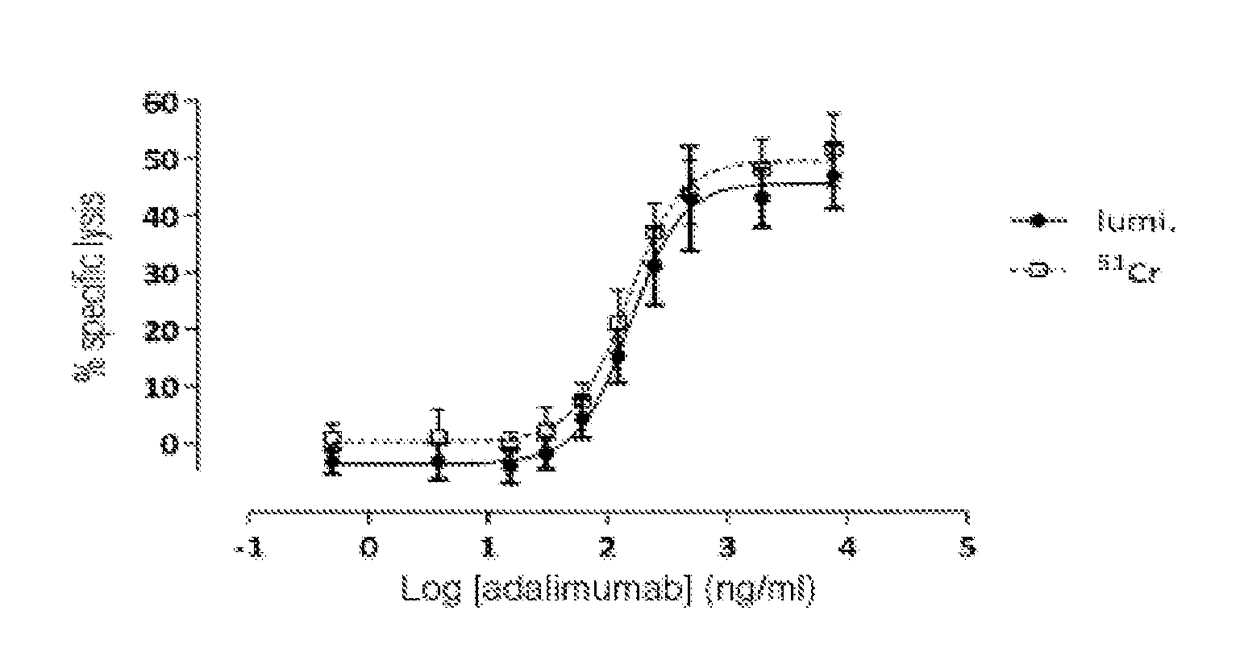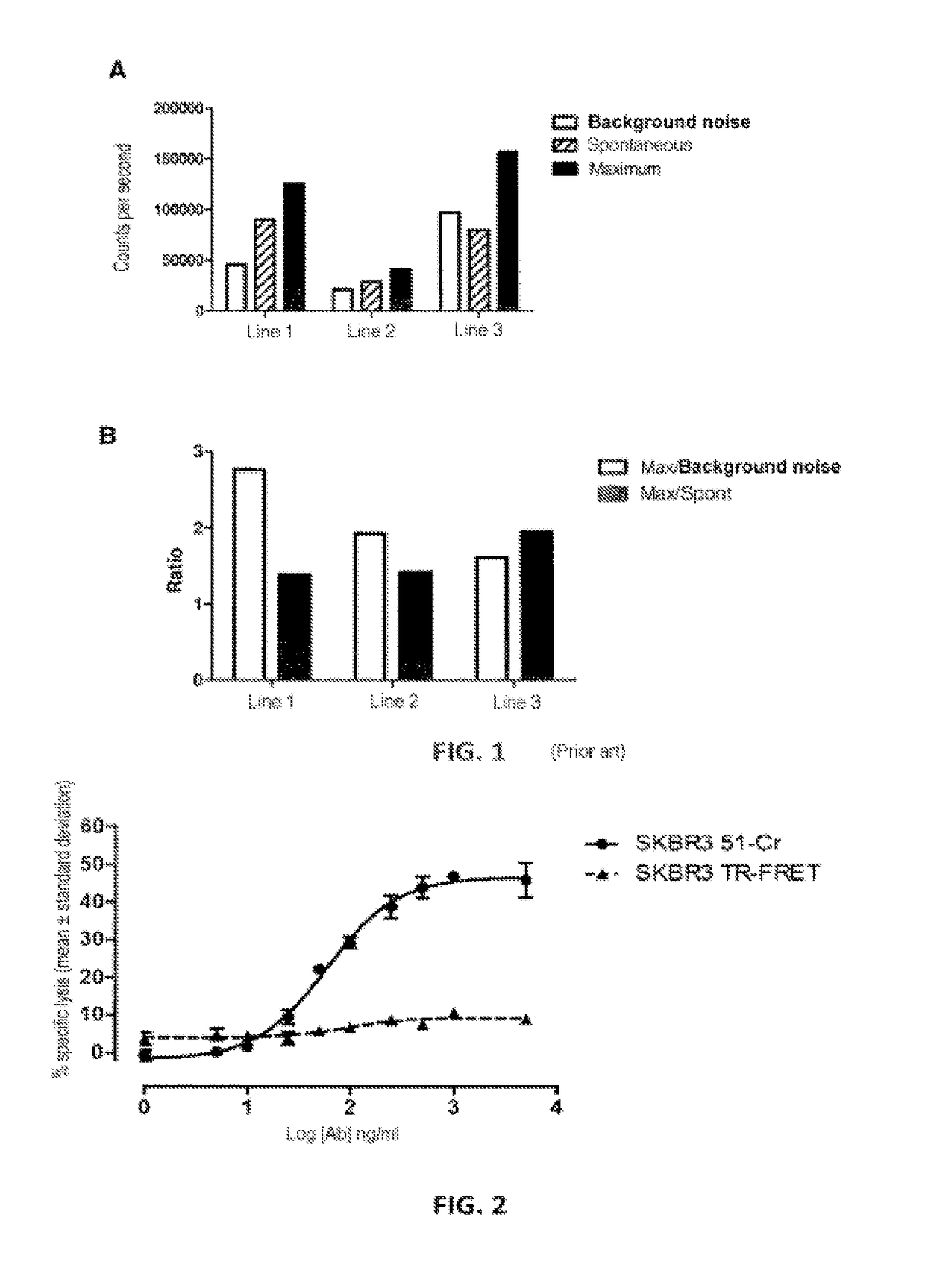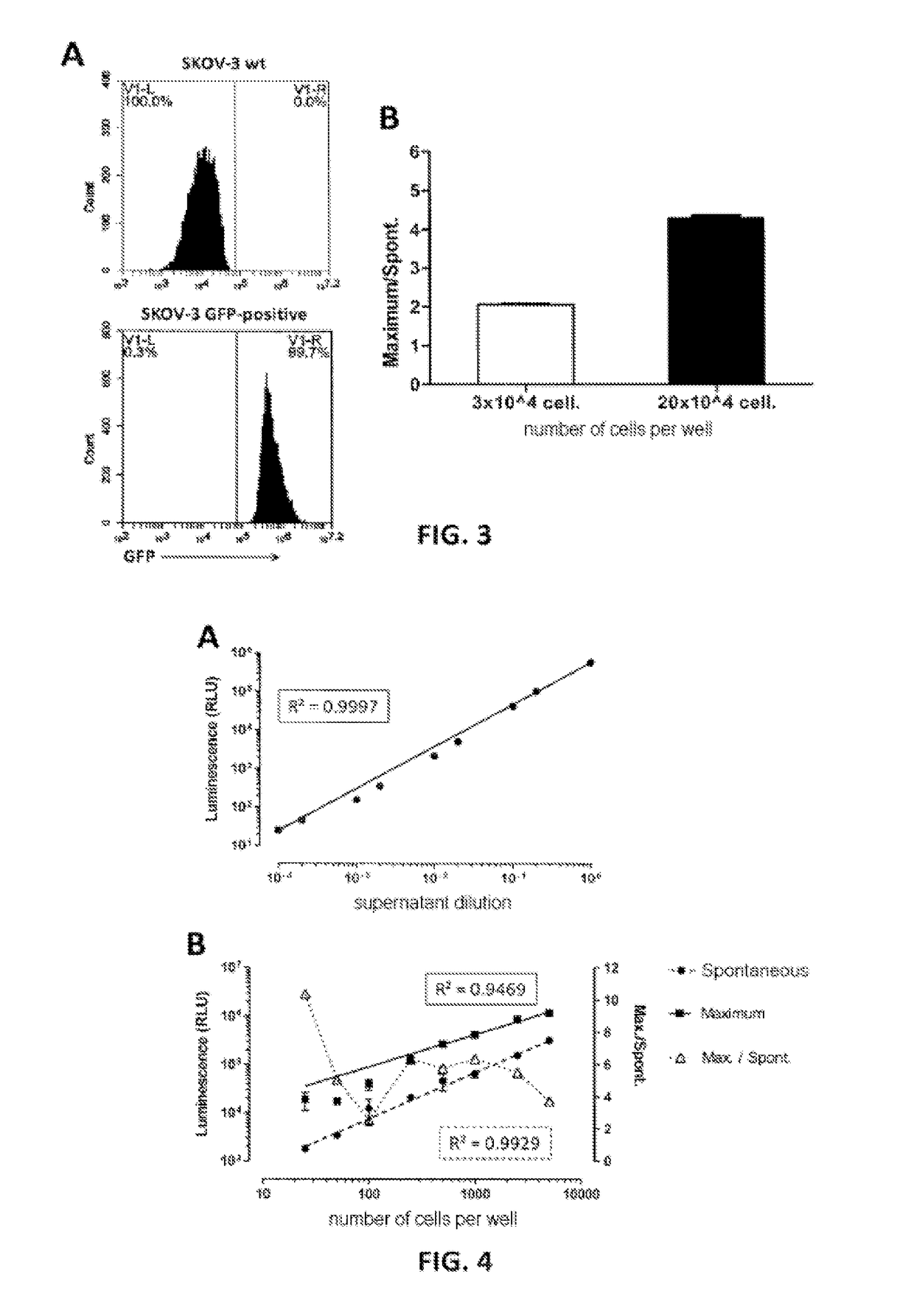Non-radioactive method for determining the cytolitic activity of an agent with respect to target cells, use thereof and associated kit
- Summary
- Abstract
- Description
- Claims
- Application Information
AI Technical Summary
Benefits of technology
Problems solved by technology
Method used
Image
Examples
example 1
Linearity of the Luminescent Signal and the Influence of the Amount of Cells on this Signal
[0135]The luminescence of a supernatant containing nanoluciferase was measured, after lysis with triton X-100, serially diluted between 1 / 1 and 1 / 10 000. 25 μl of each dilution are mixed with 25 μl of Nano-Glo® substrate (Promega) in a “half-well” 96-well plate before reading on a luminometer (Mithras LB 940, Berthold Technologies, acquisition time 0.05 s). A linear regression of the values obtained is performed (see FIG. 4A: strength of the luminescent signal obtained, expressed in RLU (Relative Luminescence Unit) as a function of the dilution). It is noted, firstly, that this signal is linear (regression coefficient R2=0.9997) over the entire measurement range and extends approximately from 10 to 106 arbitrary luminescence units on the reader used.
[0136]Secondly, the linearity of the signals from spontaneous and maximum release of CHO-K1 cells expressing nanoluciferase was evaluated by incub...
example 2
Linear Relationship Between the Strength of the Luminescent Signal and the Number of Cells Actually Dead During a Cytotoxicity Assay
[0138]A complement lysis assay was carried out on Raji cells (expressing nanoluciferase) in the presence of a commercially available anti-CD20 therapeutic antibody, MabThera® (INN: rituximab).
[0139]These Raji cells expressing nanoluciferase are incubated for 4 h at 37° C. in flat-bottomed 96-well plates (3000 cells per well) in RPMI-1640 medium, in the presence of variable amounts of anti-CD20 antibodies (MabThera®, Roche, range of 9 concentrations from 1093.5 to 0.167 ng / ml per 1 / 3 dilution increment) and of 1 CH50 (hemolytic complement 50, usual unit of measurement of complement activity) of guinea pig complement (Sigma-Aldrich). Control conditions are also carried out, making it possible to measure the spontaneous release (3000 target cells in RPMI-1640, 1 CH50 of guinea pig complement and 1093.5 ng / ml of an antibody which does not bind to Raji cells...
example 3
[0141]FIG. 8, in which the specific lysis of adherent cells (SKOV3) or non-adherent cells (Raji) expressing nanoluciferase was measured in an ADCC assay according to the present invention, shows the dynamic nature of said method.
[0142]Non-adherent (Raji) or adherent (SKOV3) target cells transformed to stably express nanoluciferase were incubated (at 37° C. in a humidified atmosphere at 5% CO2) in flat-bottomed 96-well plates treated for cell culture (3000 target cells per well), in the presence of increasing concentrations (the logarithms of which are indicated along the x-axis) of the corresponding antibody (rituximab [MabThera®] or trastuzumab [Herceptin®], respectively) and of cytotoxic effector cells (T lymphocytes expressing CD16, 30 000 effector cells per well) in RPMI-1640 supplemented with 5% of FCS. Each range is deposited 4 times (for the 4 incubation times tested) with 3 wells per condition (triplicate). After 1 (black circles), 2 (black squares), 3 (white diamonds) or 4 ...
PUM
 Login to View More
Login to View More Abstract
Description
Claims
Application Information
 Login to View More
Login to View More - R&D
- Intellectual Property
- Life Sciences
- Materials
- Tech Scout
- Unparalleled Data Quality
- Higher Quality Content
- 60% Fewer Hallucinations
Browse by: Latest US Patents, China's latest patents, Technical Efficacy Thesaurus, Application Domain, Technology Topic, Popular Technical Reports.
© 2025 PatSnap. All rights reserved.Legal|Privacy policy|Modern Slavery Act Transparency Statement|Sitemap|About US| Contact US: help@patsnap.com



